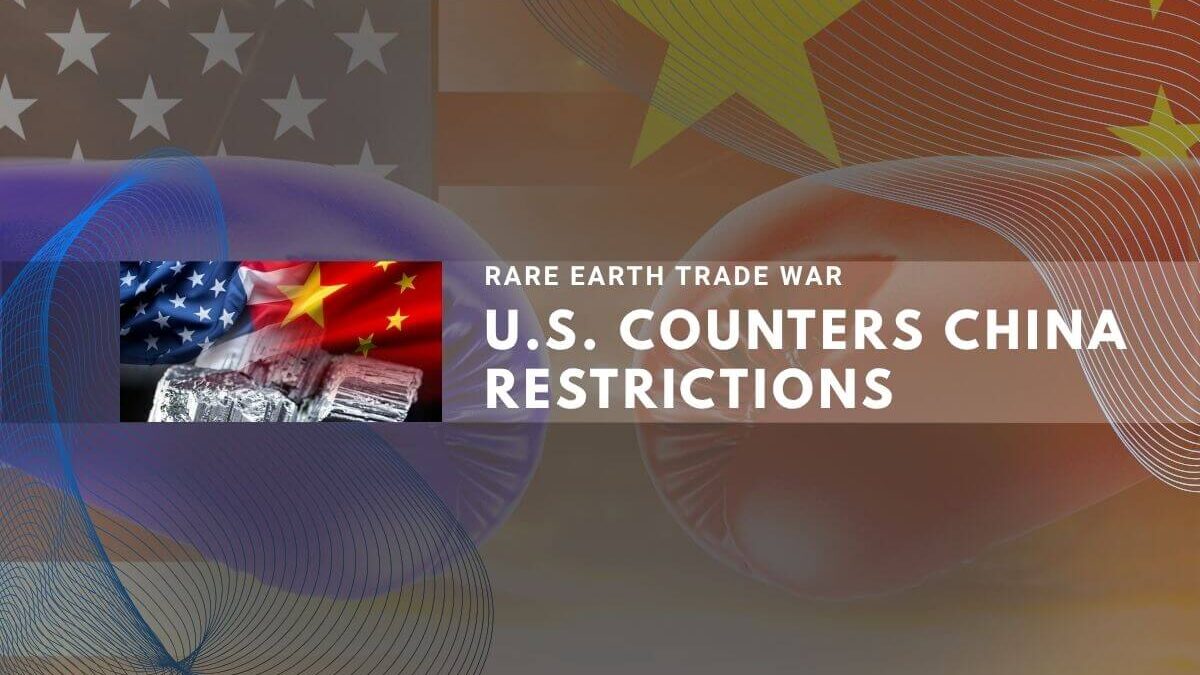The United States counters China’s rare earth export controls by deploying targeted measures in technology, finance, and allied coordination. By carefully deploying technology and finance strategies, the U S not only preserves its negotiating strength but also secures critical supply chains. Coordinating with allies ensures that these measures are more effective, reinforcing the United States’ position in global trade and strategic industries.
China’s Latest Export Controls
On October 9, 2025, China’s Ministry of Commerce issued Announcement No. 62, expanding export controls to rare-earth elements, permanent magnets, production equipment, and related technologies. Exports require government approval if products contain 0.1 percent or more by value of Chinese-origin rare earths or rely on Chinese extraction, refining, or magnet-making processes. Controls on technology items took effect immediately, with full extraterritorial enforcement from December 1, 2025.[1][2]
China processes over 90 percent of global rare-earth oxides and magnets, granting it substantial leverage over civilian and defense industries. Although narrower than feared, the new rules cover 17 elements, specialized machinery, and upstream technologies.[3][4][5][6]
U.S. Response Options
The United States can deploy several levers to counterbalance Beijing’s restrictions:
| Measure | Description | Citations |
|---|---|---|
| Technology Export Restrictions | Block exports of jet engines, avionics, and semiconductor equipment to slow aerospace and electronics industries. | [7][3] |
| Software and OS Licenses | Suspend Microsoft Windows licenses and updates in China to create systemic security gaps. | [8][9] |
| Financial Sanctions | Freeze dollar-denominated assets and restrict SWIFT access for Chinese firms. | [10][11] |
| Allied Tariff Coordination | Encourage partners (e.g., Mexico’s proposed 50 percent duties) to impose parallel tariffs. | [12][13] |
| Supply-Chain Diversification Funding | Support mining and refining projects in Australia and the U.S. via public-private investments. | [14][15] |
Technology Supply-Chain Controls
The U.S. leads in commercial aviation components and chip-design software. Western firms hold over 70 percent of China’s chip-design software market. Cutting access would force China toward slower domestic alternatives. Further tightening of lithography and etching tool exports would hamper advanced semiconductor production.[7][16]
Software and Operating Systems
Approximately 90 percent of Chinese PCs run Microsoft Windows. Suspending licenses or critical updates would expose networks to security threats and operational disruptions.[9][17][8]
Financial Sanctions and Allied Action
Freezing yuan-denominated or dollar-denominated assets of key Chinese firms and blocking access to SWIFT would raise financing costs and complicate transactions. Coordinated tariffs among U.S. allies prevent China from diverting exports to alternative markets. Mexico paused deliberations on 1,500-product tariffs pending consultations, illustrating allied alignment potential.[12][13][10][11]
Encouraging Supply-Chain Diversification
Investments under the U.S. Defense Production Act and Australia’s $1.2 billion Critical Minerals Facility can expand mining, processing, and magnet manufacturing outside China. Australia’s rare-earth sector is projected to grow at a 12.2 percent CAGR through 2033, driven by government incentives.[14][18]
Read Also: Trump proposes tech export restrictions and a new 100% tariff on imports from China
Strategic Implications
Capital Economics notes that China’s rare-earth gamble may backfire by spurring global diversification away from Chinese sources. In response, the United states counters chinas rare earth export controls by deploying targeted measures in technology, finance, and allied coordination. By deploying us deploys technology finance and strategies, the U.S. preserves negotiating strength while securing critical supply chains.
Coordinated allied measures further amplify the impact of these actions. Overly aggressive U S measures risk accelerating decoupling and dampening growth. The upcoming APEC summit in Gyeongju, where Presidents Trump and Xi Jinping will meet, offers a chance for negotiated de-escalation or a new framework for trade relations. [19][20][21][6][22]
